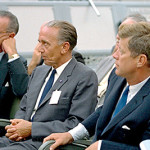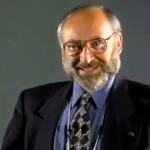
David W. Mantik, M.D., Ph.D.
The most dangerous and vicious of all forgeries are those committed in behalf of a cause—the cause of a nation, of an institution, or of a leader—and intended to bring about a permanent falsification of history. —Allan Nevins
Between 1994 and 1998, the Assassination Records Review Board (ARRB) processed for release approximately 60,000 JFK assassination documents. Its staff also conducted new depositions and interviews with many medical witnesses, some completely new to the case. This wide panorama of fresh sources amassed a compelling case for a post-assassination cover-up in the medical evidence, an area heretofore almost totally ignored by historians. Inasmuch as the assassination is a major event of the twentieth century, and may well represent a turning point in American history, it is incumbent upon historians to understand and explain this event—as well as those that surround it. To date, however, a deafening silence has reigned on these matters, as historians have preferred to tolerate the harvest of The Warren Report rather than to cultivate their own fields.
Possibly inquisitive historians, naturally enough, have no craving to be tainted as balmy by the media paintbrushes, as well might befall them were they to admit publicly to such curiosity. The plain fact, though, is that this controversial issue frightens historians: most genuinely fear for their own professional prestige, and many fear subconsciously at what would gaze back at them from the subterranean depths of this case were they to peer too intently into the well of history. Given the unique nature of these events, and their profound impact on America, this fear is understandable. Ultimately, however, these issues must be faced honestly and responsibly. It is no longer sufficient merely to quote a lawyer turned journalist on these serious questions, nor can the matter be left to the most amateur of professions—the media.
Given the manipulation of the autopsy materials (which were controlled by the Secret Service), the post-assassination cover-up necessarily required the assistance of key government personnel, probably at a high level, possibly even the highest. The growing body of evidence for this conclusion is now simply too great to ignore. Heretofore, the historians’ tacitly donned mantle of innocence radiated an aura of genteel credibility, but that mantle has become threadbare. If historians continue to deny the deceitful reality underlying the post-assassination cover-up, they, too, risk becoming accessories after the fact. The bar of history is even now calling them to the stand. The time for a response has come.
Introduction2
In the summer of 1993, shortly before a visit to the Hearst Castle in San Simeon, I was called to consult on Patricia Lake, an elderly patient with lung cancer. She communicated to me a goal that no other patient—before or since—has ever disclosed: she was writing an autobiography that she hoped to turn into a movie or a play. From a colleague, I soon learned that she was the only child of Marion Davies and William Randolph Hearst (1863-1951), the newspaper magnate and jingoist for the Spanish-American War, who had been immortalized by Orson Welles in the movie, Citizen Kane (1941). The striking fact, though, is that Patricia Lake had lived most of her life without knowing who her true father and mother were, which was why she had started writing her autobiography so late. This extraordinary story was recounted in her obituary (The Los Angeles Times 31 October 1993, p. 14).
Like my patient who had a secret personal history, countries also have hidden histories, as David W. Belin learned with some distaste in 1975, when he served as Executive Director of the Rockefeller Commission. On 22 December 1974, Seymour Hersh had written a front-page story for The New York Times that alleged illegal CIA activities in the US. The next month, President Gerald Ford chose Nelson Rockefeller to lead an investigation of the CIA. Belin, a former counsel to the Warren Commission, was selected by Ford3 (who had also served on the Warren Commission) to be its Executive Director. During his tenure, Belin learned about the “family jewels,” a secret record of CIA activities.4 He would later write:
“The family jewels contained references to CIA consideration of plots to assassinate Cuban premier Fidel Castro, Dominican Republic dictator Rafael Trujillo, and possibly Premier Patrice Lumumba of the Congo.”
Ford subsequently initiated new legislation that made it illegal for an American to “. . . engage in, or conspire to engage in, political assassination” (Belin 1988, p. 128). A similar law was passed (regarding the assassination of US presidents) after the death of JFK. Prior to his murder, it was not federal crime to kill a US president. When a Pandora’s box such as this is opened, life becomes unpredictable; the publication of these revelations altered most Americans’ view of their own history, particularly since these discoveries came close upon the heels of the Watergate fiasco. Now that another treasure trove has been opened—the new JFK documents and interviews released by the Assassination Records Review Board (ARRB)—our view of American history must inevitably change once again. (Continued…)
*Editor’s Note: Due to the length of this article it is now presented in its entirety in a PDF for your viewing convenience. You may also download the article to your hard drive.






Hi there, just became aware of your blog through
Google, and found that it’s really informative.
I am gonna watch out for brussels. I’ll be grateful if you
continue this in future. Many people will be benefited from your writing.
Cheers!